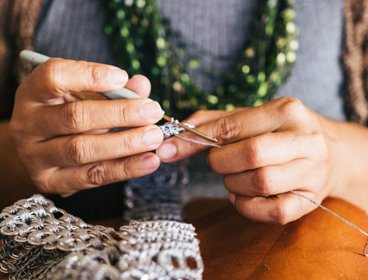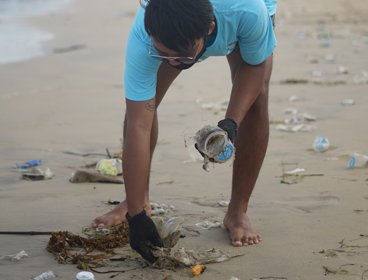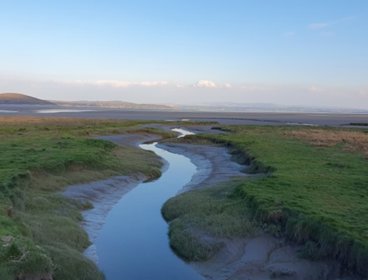By Megan Blake, University of Sheffield
A common myth holds that people in economically wealthy countries are food secure, while those who live in poorer nations are food insecure. While economically wealthy nations generally have the capability to import or produce enough food for everyone, the system of distribution and access to food is not always one that provides for everyone. Indeed, some of the wealthiest countries are also some of the most unequal in term of how income is distributed within its population. A truer statement would be that the rates of food insecurity among people in economically unequal countries is greater compared to those where wealth is more equally distributed. The United Kingdom is an excellent example of an unequal society with high rates of food insecurity, and wealth inequalities have been increasing since the 1970s. While there is a long history of community-scale organisations that have tried to support those who are hungry or who struggle to have the food they need to live a healthy life, the prevalence, diversity and visibility of these organisations has increased in recent years.
Many consider poverty to be the situation of not having enough money to purchase necessities including food. This is the economic model and the solution is to fill an immediate need for that individual or household by either financial transfer or food aid. Some organisations subscribe to this view and provide support accordingly, for example food banks. However, in my research on poverty and food security I have worked with a wide range of community and voluntary organisations that adopt a different approach to supporting their communities.
Their social or development model derived from on-the-ground stories of difficulty and support aligns more closely with an understanding of poverty that recognises money is just one of the many resources people and communities needed to be able—to have the capability—to live well and be resilient in times of crisis. As a researcher I have been able to give a framework or shape to these lived experiences that communities have struggled to get outsiders to see. Also, as a researcher I can take a view from outside or above to identify patterns, similarities, commonalities and multiplicities that those living within did not know existed. Where people and communities thought they were alone, my researcher’s perspective has enabled them to know that they are part of a bigger system. It also helps give them a voice and provide a platform for the solutions that they imagine and that work for them.
As a geographer, I also bring a specific understanding to my interpretation of these stories, experiences, and activities. My geographer’s lens (after Massey) allows me to see the ways that places are produced through the layering of activities and the infrastructures that facilitate those activities and the values that motived them in the first place. This in turn has enabled me, for example, to explain why low nutrition foodscapes emerge alongside places where people struggle with poverty.
The people and community organisations I have worked with have demonstrated to me that poverty is a force that acts not only on people but also on the places within which they live. Poverty is concentrated in places. When you have little, getting the most out of very little involves making choices about how much food you can get for the number of people you must provide for and how full they will feel once they have eaten it. Alongside this, people use food to express care so it is not just about ensuring fullness, but that the food eaten has been satisfying and will not be wasted.
My research has enabled me to convince organisations that provide food support, local governments and even food retailers that to address poverty and food insecurity places must be repaired and the assets of those places must be enhanced. I have delivered workshops and been embedded in organisations, large and small. These interactions have been to build cultural infrastructures and strategies that enable repair and enhancement work to happen. People and communities have spoken of the need for dignity and reciprocity as well as a desire to determine their own lives and participate in a system that makes space for them and values their input. I have repeated these communications as I have been part of teams responsible for designing and introducing strategies and interventions and have sought to put these principles at the heart of what is done and delivered.
The challenges are many and the stories people tell can be difficult to hear but doing work with community organisations to uncover the causes and consequences of poverty, its related food insecurity, and their responses has revealed more that gives hope than is hopeless.
Some lessons I have learned in this process prompt some useful guiding questions for doing work in this area:
-
First ask yourself what skills and understanding you bring to the conversation and be clear about what these are to yourself and others. Then consider what assumptions are you bringing into the research and what are the possible implications of holding on to those? Are there ways you can guard against the negatives while maximising the positives that having you there can produce?
-
Be confident to say what you do know and what you do not. I have found that saying ‘I don’t know’ and explaining why can increase trust. When answering ‘I don’t know’, are there ways that you can ask to collaboratively identify the answer to the problem or issue. What strategies will you employ to ensure that people feel able to speak their ideas and are you prepared to leave the room if you feel that would better enable discussion?
-
Before you begin a workshop or planning session, ask yourself: Have I got enough people to help me keep the discussion going in the direction it needs to go? Have I created prompts or activities that enable people to feel they have been heard, but also enables consensus to be achieved and finds solutions that are more than one individual and are best for the community or group? Have I created an opportunity for people to let go of an us/them mentality and pre-conceived notions and see themselves as in the issue rather than just observing it? Have I structured the activities in a way that builds up to the conclusions and have I given these the right amount of time?
-
Regardless of who the participants are or what role they play, ask yourself what participants get out of the process or engagement with you—Is what I am offering in return valuable or useful to them? Am I asking too much of them? Are my demands reasonable? What can I do so that they do not feel I am wasting their time?
How to cite
Blake, M. (2023) Poverty and food insecurity. Working with voluntary and community groups. Royal Geographical Society (with IBG) Guide. Available at: https://doi.org/10.55203/UCSK4113
About this guide
Working with voluntary and community organisations for some is a very important way to do geography. These organisation come in various shapes and sizes and may also often be referred to as the third sector, the voluntary sector, not-for-profit organisations, community groups or the civic sector. In this guide, we share the experiences of researchers doing geography in collaboration with community and voluntary organisations. A range of topics and issues are explored from health, disability and care, through to austerity, violence, and craft, amongst others. We learn about the approaches taken by geographers in their work with community and voluntary organisations, and some of the challenges they have negotiated in the process.



